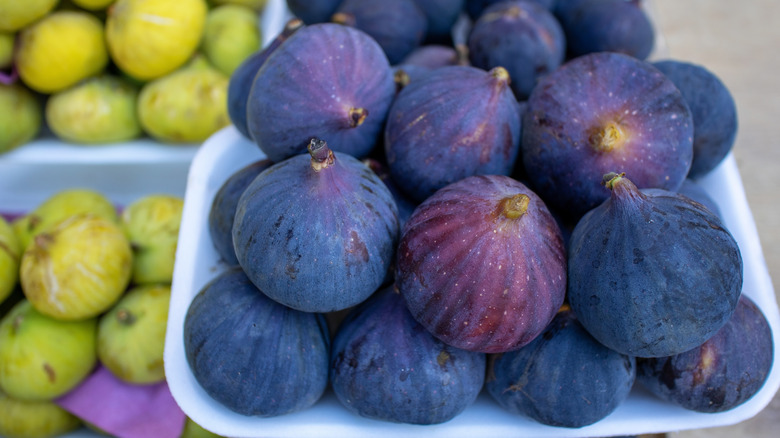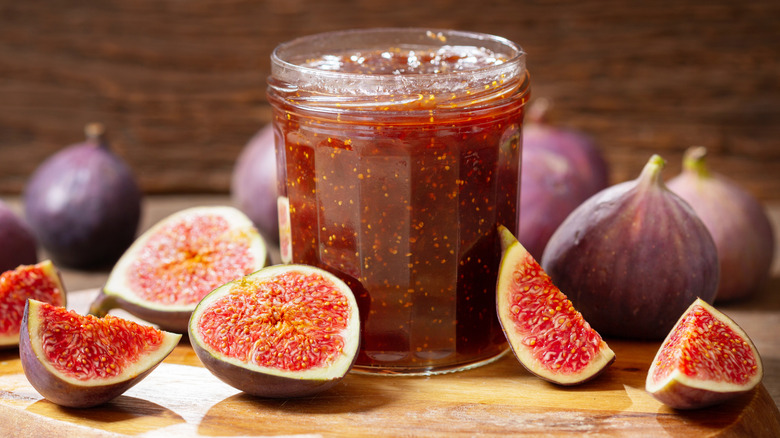How To Pick All The Good Figs At The Supermarket
Fresh figs are a bit of a rare find at the supermarket, since they have two relatively short seasons a year — early summer and late summer or the beginning of fall. So when they make an appearance at the grocery store, it's tempting to buy as many of these sweet, tender fruits as you can — especially since there are so many ways to use ripe figs. But for the sake of your wallet and your taste buds, it's worth knowing how to pick the best figs every time.
A good fig should feel soft, with a little give when lightly squeezed, and have a subtly sweet smell. Avoid figs that feel mushy or hard, which indicates that they are either unripe or overripe. Wrinkly skin is also fine, as this means the fruit has a more concentrated flavor — just steer clear from figs with broken skin. A fresh fig will also be richly hued, though the color will depend on the variety. Mission figs, for example, should be deeply purple-black, while Calimyrna, kadota, and Adriatic figs come in various shades of yellowish green. And if the bottom of the fig is slightly dewy or syrupy, this is a sign of peak ripeness — the natural sugars are seeping out.
How to store figs correctly
Of course, the quality of the figs you buy is important, but unless you're planning on eating them in one sitting, storing them to maintain freshness is key. To preserve ripe figs for as long as possible, pop them straight into the fridge after your grocery store run. Place them in an open container or even a clean egg carton. You can cover them loosely, but make sure to allow for air circulation. Space them out in a single layer (don't stack them) since figs are delicate and prone to bruising. This method will give you up to seven days to enjoy your figs. If you're not planning on eating them this soon, they'll maintain their quality in the freezer for up to six months.
Whether whole or cut, the best way to store figs in the freezer is to flash freeze them first by spreading them out on a parchment-lined tray. Since figs can be quite sticky, this prevents them from freezing together into a big clump. Once they're frozen, you can transfer them to a resealable bag or container. Keep in mind that your defrosted figs will not have the same texture or taste as when they were fresh, so it's better to keep these for smoothies, baked goods, sweet sauces, and delicious homemade jam.

